3




Heritage 2011: Education
October 28, 2011 www.plaintalk.net
03
Early settlers in Vermillion construct
Dakota Territory’s first permanent school
By David Lias
david.lias@plaintalk.net
The construction of a new school in South Dakota takes
months of planning, and an expenditure of thousands of
dollars for the services of architects and engineers before a
single brick is put into place.
The first permanent schoolhouse in Dakota Territory
was built in a single day with the help of volunteers, and a
$30 donation.
A few settlers had already arrived in what became
Dakota Territory by 1860. The territory, which
encompasses what is now North and South Dakota and
portions of Wyoming and Montana, was created on March
2, 1861.
At the time of the census of 1860, fewer than 1,000
settlers lived in South Dakota and half of them were
concentrated in the southeast corner, according to a report
compiled in 1980 by Kathleen Block, who wrote about the
history of the first permanent schoolhouse constructed in
Dakota Territory.
Families who traveled here at that time were trying to
build dwellings in which to live and to prove up their
homesteads. In 1861, Captain Nelson Miner had organized
Company A of the First Dakota Cavalry to protect settlers
from possible attacks from Native Americans.
One of his major concerns was to see that his own
children and those of the settlers received some form of
education. According to Block, in November 1864 Miner
asked people to meet with him and he proposed that a
schoolhouse be built.
He got the ball rolling on the project by donating $30
and the services of his men. Several settlers volunteered to
provide the logs, and together the men felled trees, hewed
the logs and with the help of cavalry horses, dragged the
logs into position.
In almost one day, the men constructed the first
permanent schoolhouse in Dakota Territory.
Herbert S. Schell, in his book, “History of Clay County
South Dakota,” notes that the schoolhouse “was a primitive
structure with unplastered walls and a floor of rough
cottonwood planks.”
The school measured 16-by-20 feet and had walls about
eight feet high. The roof, made of boards covered with dirt,
leaked water and mud on the homemade seats during every
rain. The roof was eventually replaced with clapboards or
rough split shingles. The building had a door facing south
and a small window on both sides.
The building soon began serving not only as a place to
educate children, but also as a general meeting place. It
housed church services, was used as a polling place and was
the center for political gatherings. It was used by singing
societies and a penmanship class met there.
In 1870, it even housed a territorial convention for one
of the Republican factions.
John L. Jolley, who taught during the winter term of
The first permanent schoolhouse in Dakota Territory was
constructed in late 1864. By
the time this photo of the
structure was taken in 1880,
the school had outserved its
usefulness and became a private residence for a family. It
was later used as a paintshop,
and during the latter part of
1881, according to newspaper
accounts, the building was torn
down and its logs transported
to the country.
(Photo courtesy of the Clay
County Historical Society)
1866-67, related among his experiences that “34 pupils
were enrolled with 34 different kinds of readers; that of the
34 pupils, nine were women and at the close of the term
everyone was married and he always considered it an
unusually successful year.” Pupils brought any readers their
parents might have brought with them in their wagons.
Block writes that pictures of graduating classes in these
early days show them all barefooted. The curriculum
consisted solely of the basics. However, “McGuffey
Readers,” even in the second grade reader acquired by the
log schoolhouse recreators, used excerpts from “Pilgrim’s
Progress” and The Bible, difficult to be sure.
Arithmetic was taught to enable men to survey the vast
wilderness, to be able to measure precisely in order to fit a
building together with few or no expensive nails. Women
canning for the winter had to know proper quantities and
be able to buy needed amounts of supplies of sugar, salt,
etc. without tying up extra scarce funds.
And writing letters to families left behind back East
helped keep both men and women occupied when cooped
up during long cold winters.
By 1872, the school had outserved its usefulness and
became a private residence for a family. It was later used as
a paintshop, and during the latter part of 1881, according to
newspaper accounts, the building was torn down and its
logs transported to the country.
The first teacher to occupy the new schoolhouse was
Amos F. Shaw, a member of Company A who was released
from active military duty for the occasion. He conducted a
four-month winter term and was followed by Sarah Baker
who taught a term of equal length during the summer of
1865. Miss Baker, later married to James Beaty, had arrived
in Meckling Township in May 1864 as a member of the
New York Colony.
Statistical data for Clay County schools appeared for the
first time in the official report of the territorial
superintendent, James S. Foster, in December 1865. Shaw
had about 30 pupils and received compensation from the
parents at the rate of $2.50 per pupil. Miss Baker had an
enrollment of 35 students and received the same rate of pay.
Timeline of Education in Clay Co.
1866-1903
1860
1864
• First private classes are
held in Clay County.
1872
• Original log schoolhouse is
constructed.
• Independence School No.
1 is established in 1866,
leading to the construction
of dozens of schoolhouses
over the course of the next
few decades.
• A school building is
constructed on Church
Street near the bluff that
later becomes the high
school.
1873
1886
1897
1902
• The log schoolhouse is
replaced by a two-story
building on Court Street.
• Spirit Mound School No.
15 is destroyed by fire,
rebuilt the same year.
• Austin Elementary (West
Side) School is constructed
on West Main Street.
• Jolley Elementary (East
Side) School is constructed
on South University Street.

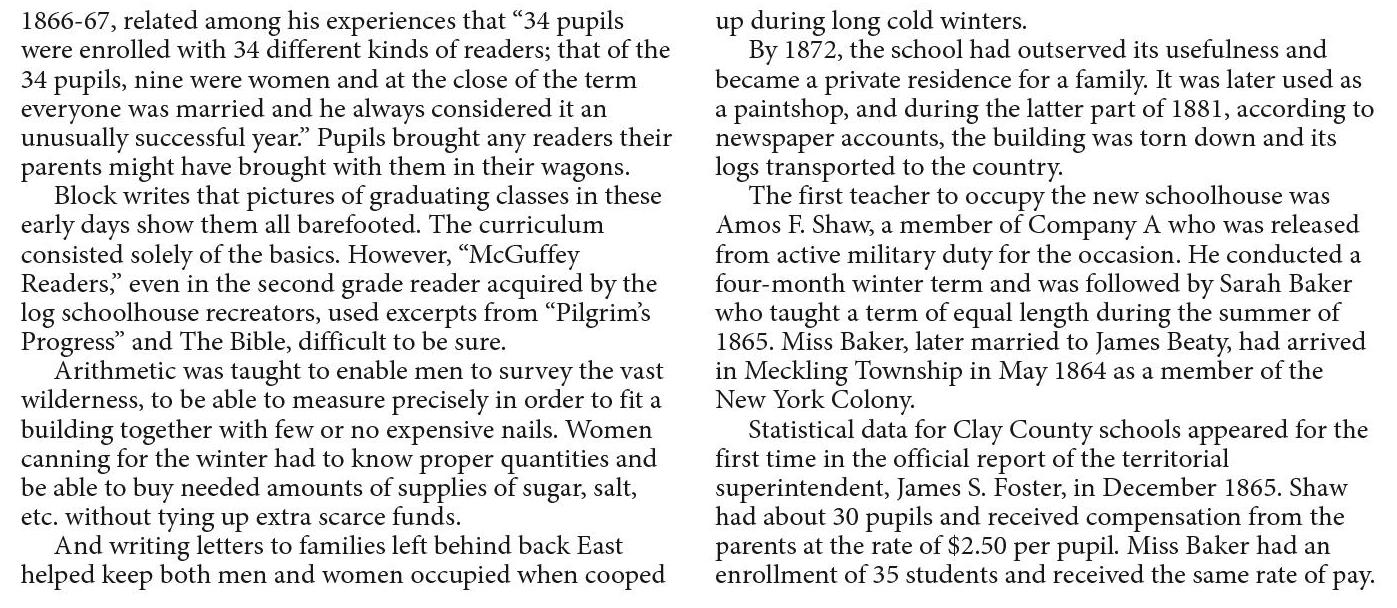
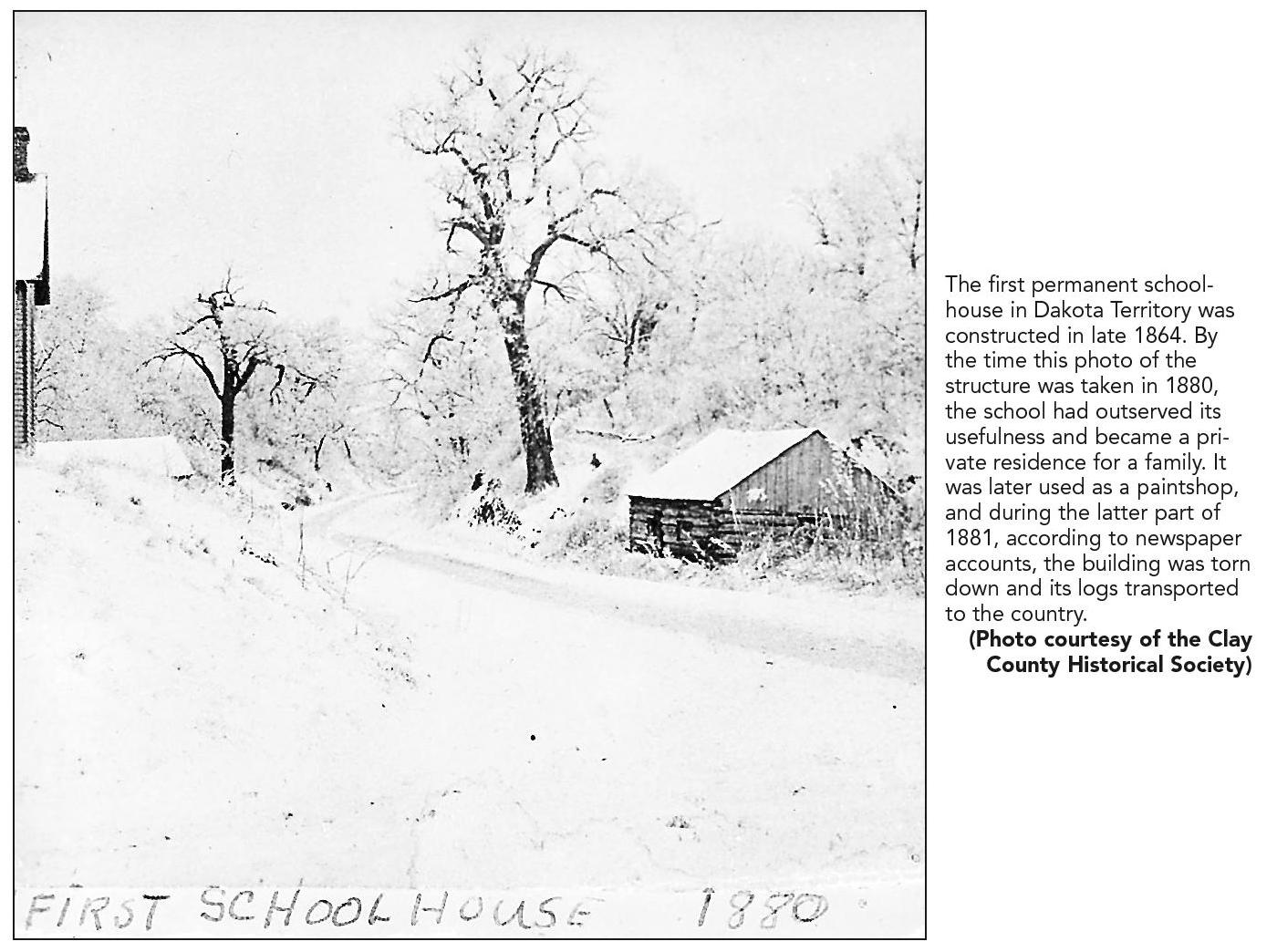
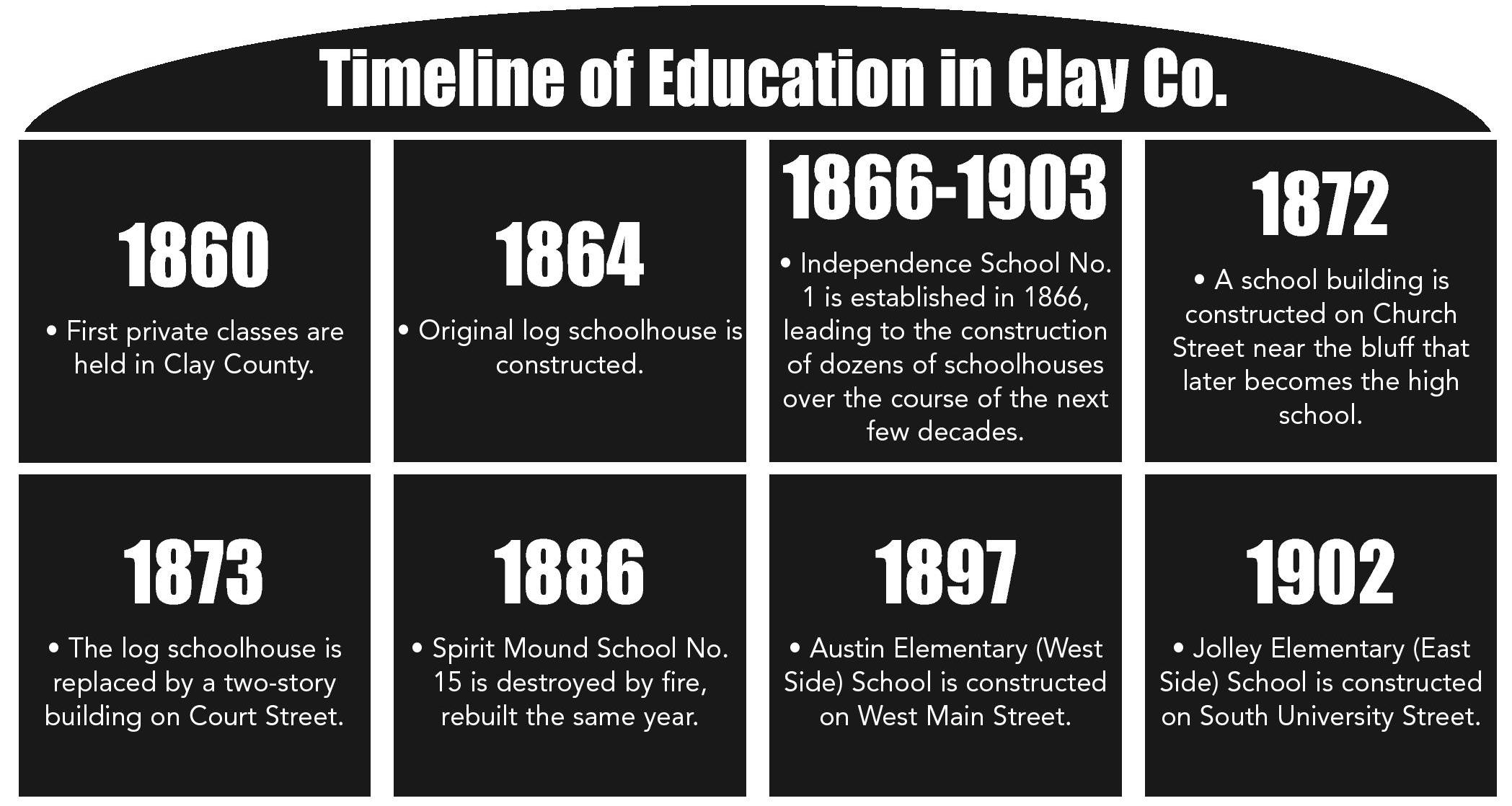



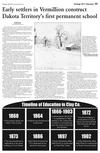
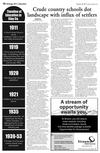

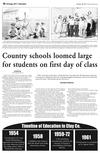
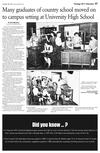


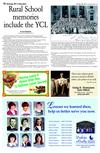



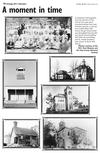

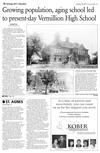
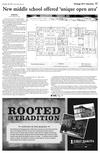
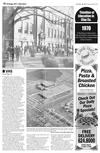


 Previous Page
Previous Page






